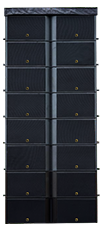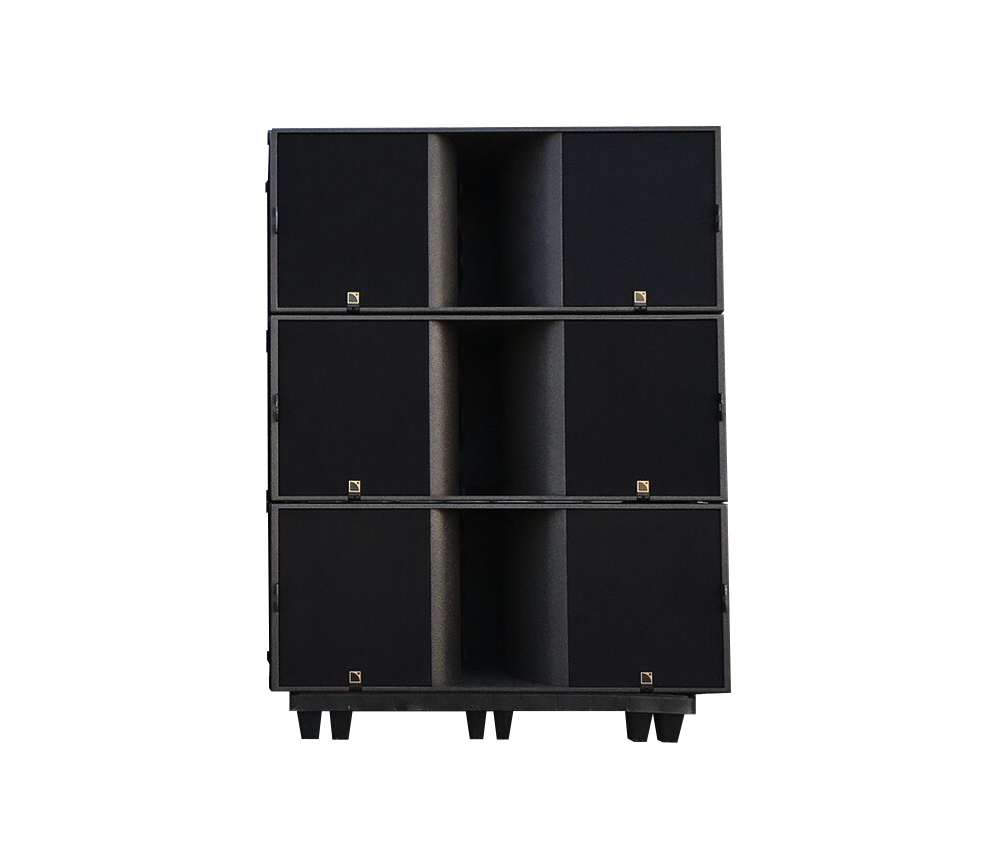How to determine how many LEDs are in my video wall?
Jan 14, 2025Determining how many LEDs are in your video wall is essential for understanding its resolution, performance, and visual impact. For anyone working with video wall displays, this calculation helps make informed decisions about design, budgeting, and maintenance.
Today, AV Vietnam will guide you through the process of figuring out how many LEDs are in your video wall, ensuring your setup meets your expectations and delivers the best results.
Why is calculating the number of LEDs important?
When planning an LED system, determining the precise quantity of lights is an essential task. It guarantees optimal functionality, cost savings, and the desired illumination effect.
First, accurate calculations promote energy conservation. Using excessive LEDs leads to unnecessary power consumption, while an insufficient amount may result in inadequate brightness. Striking a balance ensures efficient energy use.
Second, it helps minimize expenses. LEDs are an investment, and buying only the required number prevents overspending on materials and installation.
Moreover, the quantity of LEDs significantly influences design precision. Whether it’s for aesthetic lighting or practical applications, ensuring the correct number ensures the outcome aligns with expectations.
Another critical factor is heat management. Overcrowding LEDs in a small space can cause excessive heat buildup, shortening their lifespan and raising maintenance demands.
Lastly, knowing the exact number of lights enables proper power supply selection. This step is vital to avoid overloads and guarantee smooth system operation.

Why is calculating the number of LEDs important?
Key components of an LED video wall
Understanding the key components of an LED video wall is essential when determining how many LEDs are required for your setup. These components directly influence the display’s performance, resolution, and overall effectiveness.
The first critical element is the LED panels themselves. These are the building blocks of any video wall, each containing a specific number of LEDs. The total number of panels used will determine your display's overall size and resolution.
Next is the pixel pitch, which refers to the distance between each LED pixel. A smaller pixel pitch means higher resolution and more LEDs per panel, ideal for close-up viewing. On the other hand, larger pixel pitches reduce the number of LEDs but are more suitable for distant viewing applications.
Finally, the LED type plays a significant role in the visual quality and brightness of the video wall. Different LED technologies, such as SMD (Surface Mounted Device) or DIP (Dual In-line Package), offer varying levels of color accuracy, energy efficiency, and durability.
How to calculate the number of LEDs for a video wall
To determine the exact number of LEDs for a video wall, it’s important to break the process into manageable steps. This ensures that your setup meets both visual and technical requirements while optimizing the performance and cost of LED Wall.
Calculate the total pixels
The first step is to understand the pixel structure of your video wall. Every LED panel has a specific resolution, usually defined by the number of pixels in its width and height. For example, a standard LED panel might have a resolution of 192 pixels wide by 192 pixels tall.
To calculate the total pixels in your video wall, you need to know how many panels you plan to use and how they will be arranged. Let’s say you are using 10 panels in a 2x5 configuration (2 rows and 5 columns). Multiply the resolution of a single panel by the number of panels in each direction:
-
Width: 192 pixels x 5 panels = 960 pixels
-
Height: 192 pixels x 2 panels = 384 pixels
Finally, multiply the total width by the total height to find the total pixel count:
960 pixels x 384 pixels = 368,640 pixels. This is the total number of pixels in your video wall.

How to calculate the number of LEDs for a video wall
Determine the number of LEDs
Each pixel in an LED video wall is made up of three LEDs - one red, one green, and one blue. These three LEDs work together to create the full range of colors needed for vibrant displays.
To calculate the total number of LEDs, multiply the total pixel count by three (since each pixel contains three LEDs). Using the example above:
368,640 pixels x 3 LEDs per pixel = 1,105,920 LEDs.
This means your video wall will require approximately 1.1 million LEDs to function as designed.
Factors affecting the number of LEDs in a video wall
The total number of LEDs required for a video wall depends on several critical factors that influence its design, resolution, and overall performance. These considerations are essential to ensure the video wall meets its intended purpose. Two key factors to consider are the size and aspect ratio of the video wall and the viewing distance combined with the type of content being displayed.
Size and aspect ratio of the video wall
The physical dimensions and aspect ratio of the video wall play a significant role in determining the number of LEDs. A larger video wall naturally requires more LED panels, which directly increases the number of individual LEDs. For example, a 16:9 aspect ratio video wall with dimensions of 4 meters by 2.25 meters will need more panels - and consequently more LEDs - than a smaller display of the same aspect ratio.
The aspect ratio also affects how the resolution and pixel density are distributed across the screen. Maintaining the correct aspect ratio is crucial for ensuring that visuals appear proportional and not distorted, which impacts the pixel count and, therefore, the total number of LEDs. When designing the size and aspect ratio, it’s essential to calculate how many pixels each panel can contribute and align this with the overall wall dimensions.

Size and aspect ratio of the video wall
Viewing distance and content type
The intended viewing distance is another critical factor. Video walls meant for close viewing, such as in control rooms or retail spaces, require a higher resolution with smaller pixel pitches. This means more LEDs are packed into a smaller space to achieve sharp and detailed images. In contrast, video walls designed for long-distance viewing, such as billboards or stadium screens, can use larger pixel pitches, which reduce the total number of LEDs needed.
The content type also influences the LED count. Displays showing detailed graphics, text, or high-definition videos require higher pixel densities and, thus, more LEDs to deliver clarity. On the other hand, simple content like basic images or text viewed from afar can work well with fewer LEDs.
By understanding these factors, you can make informed decisions about the design and configuration of your video wall, ensuring it aligns with both technical requirements and audience expectations.
How the number of LEDs impacts display performance
The number of LEDs in a video wall plays a critical role in determining its overall performance. It affects key aspects such as resolution, color accuracy, brightness of LED Wall, and even the viewer’s experience based on distance and angle.
Resolution and image quality
The resolution of a video wall is determined by its pixel count, and since each pixel is made up of LEDs, the number of LEDs directly correlates with image clarity. A higher number of LEDs allows for more pixels, which translates into sharper and more detailed visuals.
For instance, in applications like command centers or retail displays, high-resolution images are essential for delivering critical information or creating a visually engaging experience. A smaller pixel pitch, indicating a tighter spacing of LEDs, leads to more pixels in the same area, improving image quality for close-up viewing. Conversely, fewer LEDs result in lower resolution, which is more suitable for large displays viewed from a distance.
Brightness and color accuracy
The number of LEDs also impacts the brightness and color accuracy of the display. Each LED contributes to the overall brightness of the video wall, so having more LEDs typically results in a brighter display. This is particularly important for outdoor installations or areas with high ambient light, where a brighter screen ensures visibility.
In addition to brightness, the type and quantity of LEDs influence color reproduction. High-quality LEDs in sufficient numbers enable precise color mixing, resulting in vibrant and accurate visuals. This is crucial for applications like advertising or broadcasting, where realistic and consistent colors are essential for capturing the audience's attention.

The number of LEDs impacts the brightness and color accuracy of the display
Viewing angle and distance
The density and arrangement of LEDs determine the optimal viewing angle and distance for the video wall. With more LEDs packed closely together, the display maintains its clarity and uniformity even when viewed from sharp angles. This makes it ideal for locations like stadiums or public spaces, where audiences view the screen from various positions.
On the other hand, displays with fewer LEDs may have a more limited viewing angle and are better suited for controlled environments where viewers are positioned directly in front of the screen. Additionally, fewer LEDs often mean a larger pixel pitch, which is suitable for viewing from greater distances without a noticeable loss of quality.
Layout methods and design Considerations for LED walls
The layout and design of an LED wall for events are critical to its effectiveness. Choosing the right methods and understanding key considerations ensure the display meets your functional and aesthetic goals. Below, we explore two important aspects: the splicing method and adapting the design for various application scenarios.
Splicing method
The splicing method refers to how individual LED panels are connected to form a seamless video wall. Proper splicing is essential to ensure uniformity in the display and avoid visible gaps between panels.
There are two common splicing methods:
- Standard splicing: Panels are joined edge-to-edge in a grid layout. This method is straightforward and works well for rectangular displays with consistent dimensions.
- Creative splicing: Panels are arranged in unconventional shapes or patterns, such as circles or curves. This approach is often used for artistic installations or venues requiring a unique visual impact.
When implementing a splicing method, it’s important to consider alignment accuracy. Even a small misalignment can create noticeable seams that detract from the viewing experience. Advanced calibration tools and skilled technicians are crucial to achieving a flawless connection.

Splicing method for LED walls
Different application scenarios
LED walls are used in various settings, and the design must adapt to the specific requirements of each application.
- Indoor applications: For environments such as conference rooms, retail spaces, or broadcast studios, LED walls typically require a higher resolution (smaller pixel pitch) to deliver sharp visuals at close viewing distances. The design should prioritize easy integration with existing structures and lighting conditions.
- Outdoor applications: Outdoor LED walls, like those in stadiums or on building facades, require higher brightness levels and durable, weatherproof materials. The layout should account for environmental factors like sunlight, rain, and wind to ensure reliable performance.
- Stage and event setups: In entertainment venues or live events, LED walls often serve as dynamic backdrops. The design may include modular panels for flexibility and quick assembly, with splicing methods that allow creative layouts, such as curves or asymmetrical shapes.
Each scenario requires careful planning to balance aesthetics, functionality, and cost while ensuring the display meets the audience's needs.
Optimizing LED quantity for quality and efficiency
When designing a video wall, finding the right balance between the number of LEDs and the desired performance is crucial. An optimized setup ensures high-quality visuals without overspending, making the video wall both effective and efficient.
Budget considerations
The number of LEDs in a video wall has a direct impact on the total cost. More LEDs mean higher expenses, not only for the panels themselves but also for the power supply, cooling systems, and maintenance. Therefore, determining your budget is an important first step in optimizing the LED quantity.
If cost is a major concern, consider focusing on the purpose of the video wall. For instance, if it’s meant for large audiences at a distance, you can use fewer LEDs with a larger pixel pitch, which reduces costs without sacrificing functionality.
However, for applications requiring sharp visuals, such as retail displays or control rooms, investing in a higher number of LEDs is necessary to achieve the desired quality.

Striking a balance between cost and performance is key
Choosing the right pixel pitch
Pixel pitch is another critical factor in determining the LED quantity and optimizing performance. Pixel pitch refers to the distance between two adjacent LEDs and directly affects both the resolution and viewing experience.
A smaller pixel pitch means more LEDs per panel, resulting in higher resolution and sharper images. This is ideal for setups where viewers will be close to the screen, such as indoor displays or high-end conference rooms. On the other hand, a larger pixel pitch requires fewer LEDs, making it more cost-effective and suitable for outdoor installations or video walls viewed from far away.
When choosing the pixel pitch, it’s essential to consider the primary use case and audience distance. Matching the pixel pitch to your specific needs ensures that the video wall delivers excellent quality without unnecessary LED usage.
Common mistakes when calculating the number of LEDs
While calculating the number of LEDs for a video wall might seem straightforward, several common pitfalls can lead to inaccurate estimates or suboptimal performance. Avoiding these mistakes ensures your display meets expectations while staying within budget and technical constraints.
Overlooking pixel pitch and viewing distance
One frequent error is failing to match the pixel pitch to the viewing distance. Many assume that a smaller pixel pitch always means better quality, but this isn’t always practical. For instance, using a very fine pixel pitch for a display meant to be viewed from far away not only adds unnecessary cost but also goes unnoticed by viewers. Conversely, opting for a larger pixel pitch for close-range displays can result in visible gaps and poor image clarity.
Ignoring total panel resolution
Another mistake is neglecting to account for the resolution of the LED panels. It’s essential to calculate how many pixels each panel contributes to the overall display. Misjudging this can lead to mismatched panels or inconsistent image quality across the video wall. This issue often arises when panels from different manufacturers or models are used without careful planning.

Common mistakes when calculating the number of LEDs
Miscalculating power and cooling needs
The number of LEDs directly affects the power consumption and heat generated by the video wall. A common error is underestimating the power supply needed to support the LEDs or failing to incorporate proper cooling systems. Overloaded power supplies or overheated panels can lead to performance issues and even shorten the lifespan of the video wall.
Overcompensating on LED quantity
It’s easy to assume that more LEDs are always better, but overcompensating can lead to inefficiencies. Adding unnecessary LEDs not only increases costs but also complicates installation and maintenance. Instead, focus on achieving the right balance between resolution, brightness, and viewing distance to avoid excess.
Forgetting future scalability
Lastly, many overlook the importance of planning for future scalability. Video walls often need upgrades or reconfigurations, and failing to calculate LED requirements with future expansions in mind can result in significant challenges later. Choosing panels and configurations that are flexible ensures your investment remains viable over time.
Conclusion
Calculating the number of LEDs for a video wall is a vital step in ensuring a successful and impactful display. Avoiding common mistakes, such as misjudging pixel pitch or neglecting power and cooling requirements, will save you time, money, and effort in the long run.
If you’re looking for expert assistance, AV Vietnam (member of HoaBinh Event Group - HBG) not only provides top-tier LED screen rental services but is also a trusted supplier of high-quality event equipment.
With an extensive inventory of state-of-the-art equipment and a dedicated team of technical experts, AV Vietnam is committed to delivering exceptional results for any event, whether it's a corporate conference, wedding, concert, or trade show.

AV Vietnam - A leading event equipment supplier
For more information about our LED wall rental services, contact us today via our hotline at (+84) 939 311 911 or (+84) 918 640 988. Let AV Vietnam elevate your events with seamless service and cutting-edge technology!






